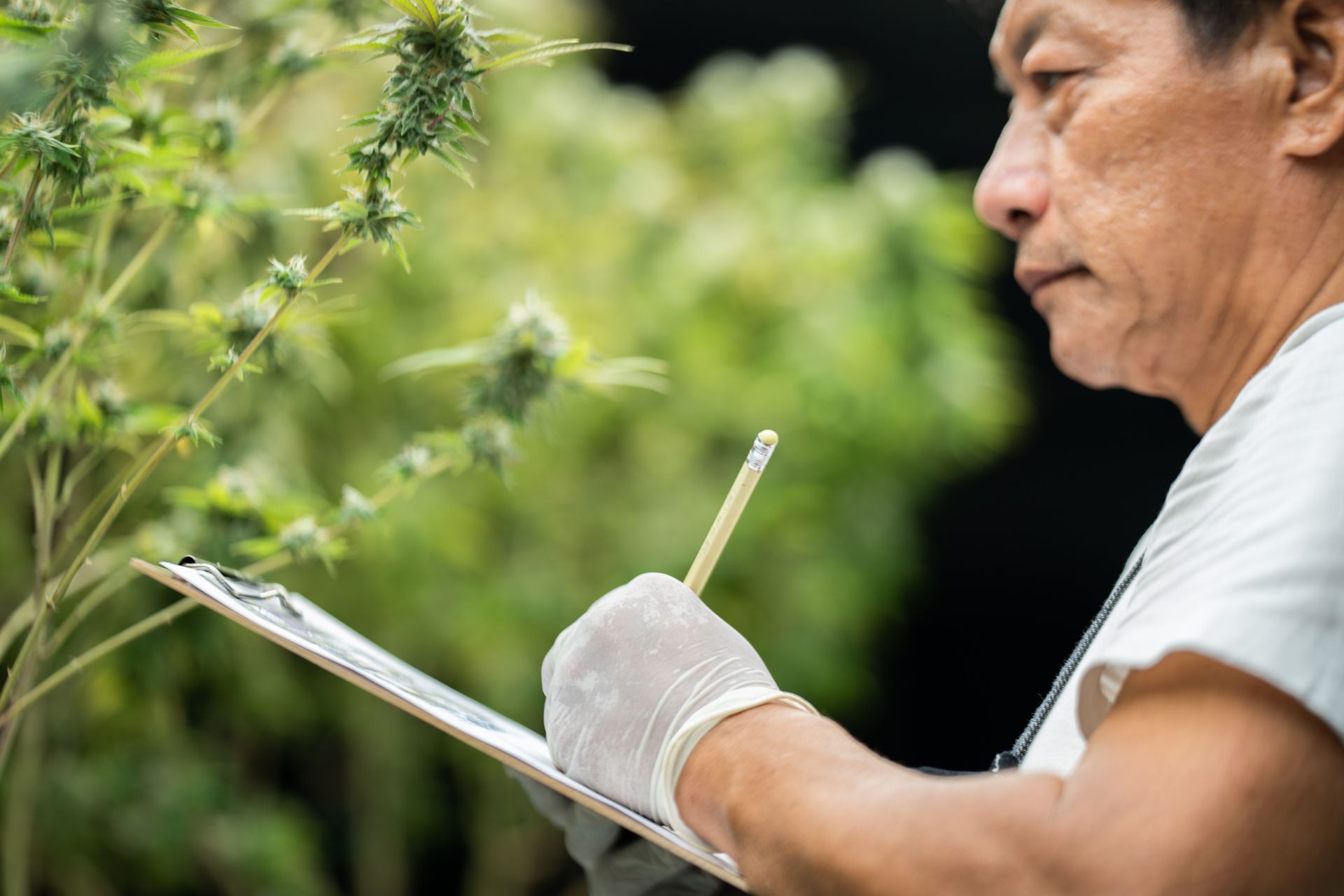Why Cannabis Businesses Struggle to Find Affordable Insurance
See How We're Different
or call us: (215) 653-8411
Understanding these challenges is crucial not only for cannabis business owners but also for investors, insurers, and policymakers working to support a sustainable and secure industry. According to a recent report, approximately 75% of cannabis industry respondents reported lacking adequate insurance to protect against risks that could harm profits, often facing a choice between unaffordable rates and no protection at all.
Regulatory Complexity and Its Impact on Insurance
One of the most significant barriers to affordable insurance in the cannabis sector is the fragmented and immature regulatory environment. Cannabis remains illegal at the federal level in the United States, even though many states have legalized it for medical and recreational use. This creates a patchwork of laws and regulations that vary widely from one state to another, complicating compliance and risk assessment for insurers.
Chris Sullivan, commercial practice leader at Powers Insurance and Risk Management, describes the cannabis industry’s regulatory infrastructure as "immature," noting that inconsistencies across state lines make it difficult for insurers to develop standardized policies. This regulatory uncertainty leads to higher premiums and more restrictive underwriting, as insurers must account for the increased risk of non-compliance and legal exposure.
Moreover, the lack of federal oversight means cannabis businesses often cannot access traditional banking and financial services, further complicating their ability to demonstrate financial stability and risk management practices to insurers. This regulatory maze drives up costs and limits the availability of comprehensive insurance coverage.
The implications of this regulatory complexity extend beyond just insurance costs; they also affect the overall growth and stability of the cannabis industry. Many entrepreneurs are hesitant to invest in cannabis ventures due to the unpredictable legal landscape, which can lead to a lack of innovation and slower market development. Without a clear regulatory framework, businesses face not only the risk of legal penalties but also the challenge of securing necessary resources and partnerships, which are crucial for scaling operations and enhancing competitiveness.
Additionally, the evolving nature of cannabis regulations means that businesses must remain agile and informed about changes that could impact their operations. This requires ongoing education and adaptation, which can be resource-intensive for smaller companies that may lack the infrastructure to navigate such complexities. As a result, the cannabis sector often finds itself in a precarious position, where the potential for growth is stifled by the very regulations that are meant to govern it. For more insight on these challenges, see Chris Sullivan’s expert analysis on the regulatory hurdles facing cannabis insurance.
Market Dynamics: Limited Insurer Participation and Hardening Conditions
Another critical factor contributing to the high cost of insurance in the cannabis industry is the historically limited number of insurers willing to provide coverage. In 2020, only six insurers offered policies to cannabis businesses, reflecting the high perceived risk and regulatory uncertainty. However, by 2023, this number had increased to over 30, signaling a growing but still cautious market.
Despite this increase, the cannabis insurance market is currently experiencing a "hardening" trend, characterized by rising premiums and stricter underwriting requirements. This shift is driven by heightened regulatory scrutiny and an uptick in claims, which have made insurers more risk-averse. For cannabis businesses, this means that even as more insurers enter the market, the cost and difficulty of securing adequate coverage remain significant challenges.
A 2025 industry report highlights this hardening trend, noting that cannabis businesses face increased premiums and more demanding policy terms as insurers respond to the evolving risk landscape. The report emphasizes that many insurers are now requiring comprehensive safety protocols and risk management strategies before extending coverage, which can be a daunting task for smaller operators who may lack the resources to implement such measures effectively.
Moreover, the complexities of cannabis regulations vary widely from state to state, adding another layer of difficulty for insurers and insured alike. For instance, in states where cannabis is fully legalized, businesses may face different compliance requirements compared to those in states where it remains only partially legal or prohibited. This patchwork of regulations can lead to confusion and inconsistency in policy offerings, further complicating the insurance landscape. As the market matures, insurers are increasingly investing in technology and data analytics to better assess risks associated with cannabis operations, which may eventually lead to more tailored and competitive insurance products.
Learn more about this market evolution in the 2025 cannabis insurance market report.
Rising Claims and Insurance Gaps
Insurance claims in the cannabis industry have been on the rise, particularly in areas such as product liability. The Cannabis Insurance Association reports a 15% increase in product liability claims, which are often related to contamination and labeling issues. These claims not only increase the financial burden on insurers but also prompt them to raise premiums and tighten policy conditions to mitigate future risks. The complexity of cannabis products, which can vary widely in potency and formulation, adds an additional layer of difficulty in ensuring compliance with safety standards, further complicating the claims landscape.
Additionally, many cannabis businesses face significant insurance gaps. A 2018 report emphasized that customers, workers, and business owners in this sector may lack access to adequate insurance to recover from accidents, injuries, or property damage. This gap leaves businesses vulnerable to financial losses that could otherwise be mitigated through proper coverage. The lack of standardized insurance products tailored to the unique risks of the cannabis industry exacerbates this issue, as many traditional insurers remain hesitant to enter this burgeoning market due to its regulatory complexities and the lingering stigma surrounding cannabis use.
Eric Jesse, a partner at Lowenstein Sandler LLP, points out that cannabis businesses struggle to secure coverage for a range of claims, including theft and product liability. He notes that legislation is currently under consideration by Congress to expand insurance options for the cannabis sector, which could help bridge some of these gaps in the future. As the industry continues to grow and evolve, the need for comprehensive insurance solutions becomes increasingly critical, not just for the protection of individual businesses but for the overall stability of the market.
Moreover, the rise in claims has prompted many cannabis companies to invest in risk management strategies, including enhanced quality control measures and employee training programs aimed at reducing the likelihood of incidents that could lead to claims. By proactively addressing potential risks, these businesses can not only protect themselves but also contribute to a more robust and responsible industry. For a detailed discussion on these insurance challenges, visit Eric Jesse’s expert commentary.
Innovations and Emerging Solutions in Cannabis Insurance
Despite the challenges, there are promising developments in the cannabis insurance market. The increase in insurers willing to cover cannabis businesses is one positive sign, reflecting growing confidence in the sector’s long-term viability. Additionally, some companies are exploring innovative approaches to risk assessment and underwriting, including the use of technology such as satellite-based data to estimate crop yields and monitor risks more accurately. These advancements not only enhance the predictive capabilities of insurers but also help cannabis businesses better understand their own risk profiles, enabling them to make more informed decisions regarding their operations and investments.
However, it is important to note that studies have shown potential limitations in these technologies. For example, a 2022 study found that satellite-based data might introduce a downward bias in measuring basis risk, potentially leading to an overestimation of insurance quality. This suggests that while technology can improve risk management, it is not a panacea and must be integrated carefully into insurance models. Furthermore, the reliance on such data raises questions about the accessibility and affordability of these technologies for smaller cannabis operators, who may lack the resources to implement advanced systems. As a result, there is a growing need for insurance products that cater to a diverse range of businesses within the cannabis sector, ensuring that all players can benefit from these innovations.
As the industry continues to mature, collaboration between insurers, regulators, and cannabis businesses will be essential to develop more tailored and affordable insurance products that meet the sector’s unique needs. This collaboration could take various forms, such as joint research initiatives to better understand the specific risks associated with cannabis cultivation and distribution. Additionally, educational programs aimed at both insurers and cannabis entrepreneurs could foster a deeper understanding of the complexities involved in cannabis insurance, leading to more effective risk management strategies. By working together, stakeholders can create a more robust insurance framework that not only protects businesses but also supports the overall growth and sustainability of the cannabis industry.
Conclusion: Navigating the Path Forward

Article By: Deb Sculli
Cannabis Insurance Specialist




